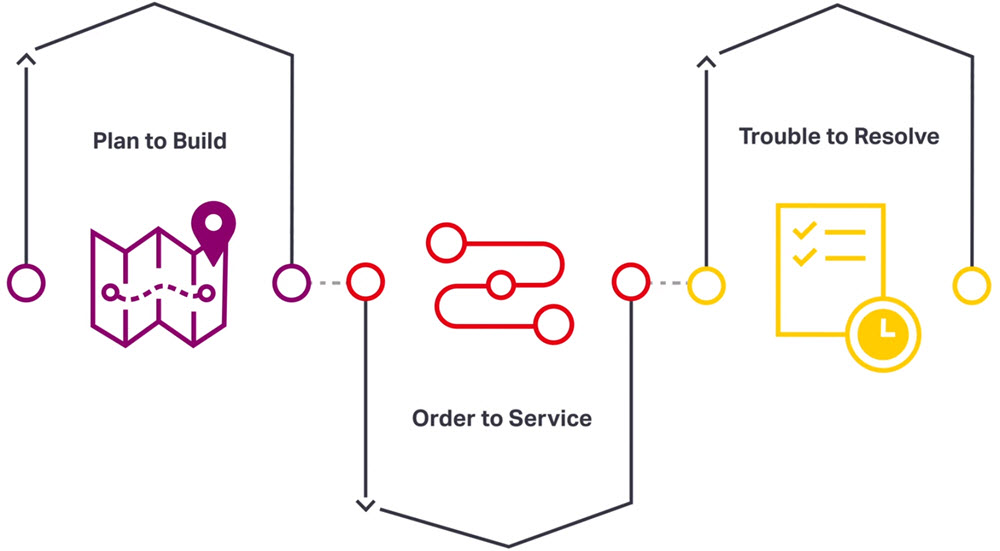AsiaPac CSPs are racing to keep up with the digital economy
AsiaPac service providers are looking to evolve their offerings and operations to address the challenges from disruptive competitors. Ciena's Anup Changaroth details how intelligent automation paves the way to the future. This article was originally published in Disruptive Asia.
There is no doubt that one of the top priorities of communications service providers in AsiaPac is to move from one letter of the alphabet to the next. I’m talking about the move from CSP (Communication Service Provider) to DSP (Digital Service Provider). In conversations I have with innovation heads and C-suite executives among the region’s top service providers, this is one of the key recurrent themes. It is essential to address disruptive competitors, which 74% of telcos view as their most significant challenge, according to a recent study from EY.
This evolution means different things to different organizations, depending on the market and the service provider’s own circumstances. It is worth noting straightaway every entity’s path to becoming a DSP is different. For example, some service providers (SPs) may view it as consolidating customer engagement through digital channels, others may see it increasing the functionality of customer autonomy and app-based engagement – such as allowing subscribers to buy new services and access deals with the simple click of a button.
Another approach refers to improved use of big data, where SPs leverage analytics and integrate it with business support systems (BSS) and operations support systems (OSS) to optimize operations and provide personalized services for their customers.
A DSP needs to be able to integrate intelligent automation into business processes and network operations from end to end. From plan to build, order to service, and problem to resolution – artificial intelligence (AI) should form part and parcel of this network core.
A DSP needs a network ready for today’s digital demands
However, these approaches only scratch the surface and will not yield sustainable and meaningful change in value, profitability and business growth. For true migration to a DSP, we need to delve down into the core of the SP’s business, right to the network core.
A great analogy is cloud computing. Cloud service providers like Amazon Web Services (AWS) have completely revolutionized the way companies provision their compute and storage resources. Through API-based integration with enterprise systems, acquiring new data storage capacity is a matter of a few seconds and can be completely done at the machine-to-machine level with minimal manual intervention. On the other hand, provisioning new network services typically entails a significant amount of manual work, which may take weeks and even months to implement.
Why is this? And why is it difficult to change?
The network is the beating heart of any organization today. The entire business is built around it, and most organizations have a huge team in place to manage their network. Supplementary to this is the IT infrastructure which is equally complex. IT infrastructure is responsible for building the internal business apps, processes and systems needed to create the services delivered by the network.
This is a simple view, but the reality is that quite often, the network and IT infrastructure are anything but homogenous. The telecoms industry is prone to frequent consolidation, creating both networks and IT systems that are often a patchwork of numerous different systems from different entities, that are virtually ‘patched’ together. We often see IT operations working in silos and the networks operating in parallel silos – and hundreds, if not thousands, of manual processes to launch and run services.
This underlying diversity becomes an issue when new services are to be developed and launched. Customers today expect to have access to their service much more quickly than ever before – a problem when this creates lead times of as much as six months to roll out a truly new service such as virtualized, hybrid network services like software-defined wide area networks (SD-WAN).

Networks with intelligent automation are the way of the future
A DSP needs to be able to integrate intelligent automation into business processes and network operations from end to end. From plan to build, order to service, and problem to resolution – artificial intelligence (AI) should form part and parcel of this network core, that derives data-driven insights on how every part of the network is performing and instructs the network to take action when needed to avoid service disruption.
Once intelligent automation and AI-driven networks are in place, more adaptive IT and network operations will follow naturally. This will allow SPs to overcome siloed ways of operating and move into an era of openness, collaboration and flexibility. API-based provisioning completely at the machine-to-machine level for new network services are essential for next-generation innovation such as network slicing, bandwidth on demand and more. This allows SPs to drive down operating expenses and slash errors and time to market for new services. Enterprises using the SP’s services will then have the power to manage their programmable, flexible, digital networks as they need.By enabling intelligent network automation, SPs can move out of their historical services of connectivity and bandwidth to true DSP territory – including simplified operations as a result of convergence, better customer understanding, improved user experiences, resulting in agility and long-term value.

